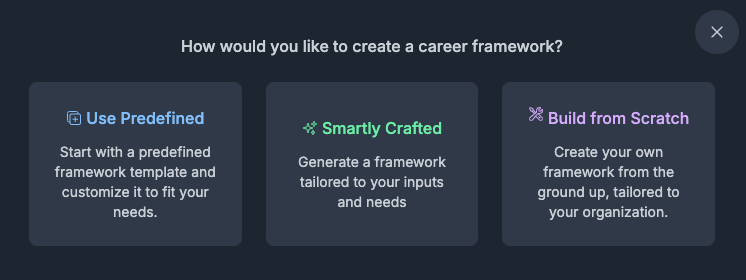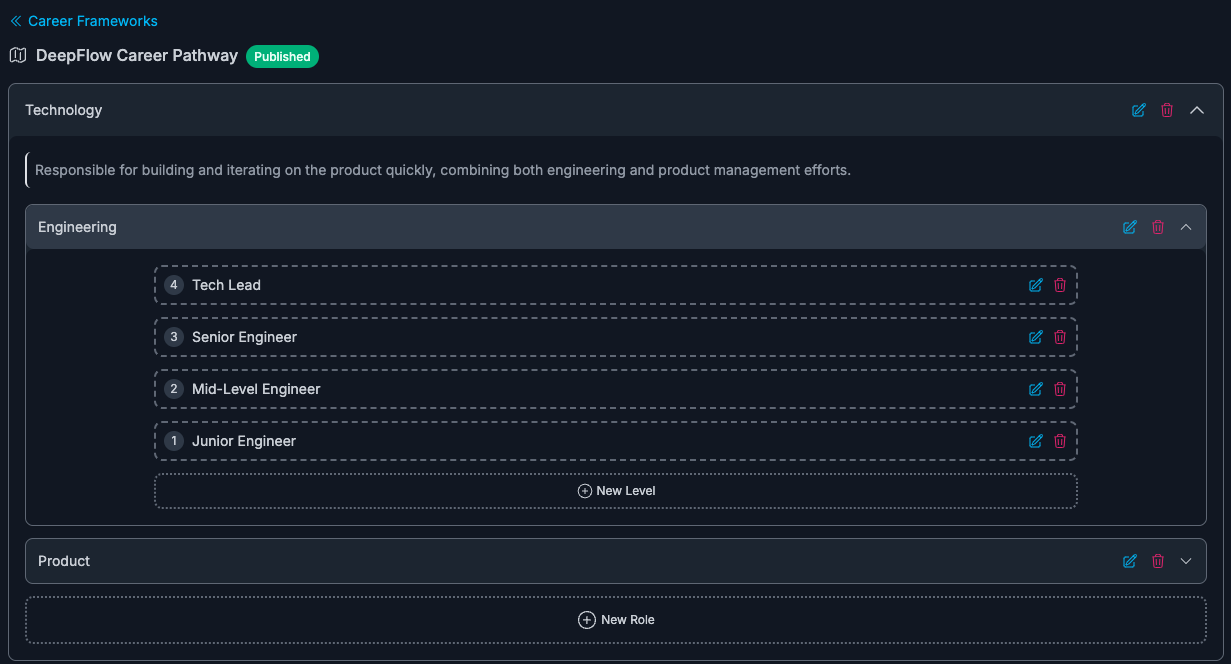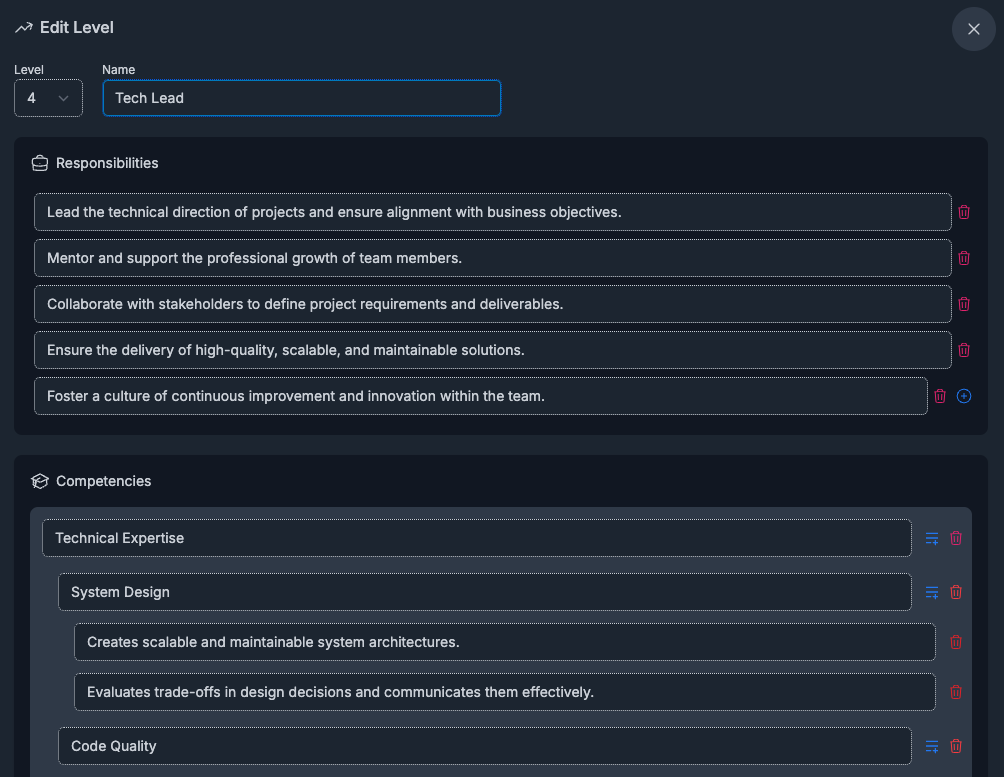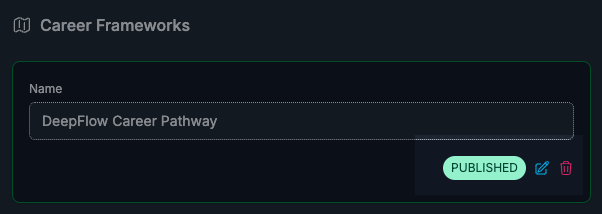Creating career frameworks
ClarityLoop helps organizations build structured, transparent career frameworks to guide individual growth and support managers with clear development paths. Frameworks are designed with an accumulative structure—responsibilities and competencies flow from broader elements to more specific ones—ensuring clarity without repetition.
Who can create career frameworks?
- Workspace owners can create, edit, and publish frameworks.
- Available exclusively on the Professional Plan.
Getting started

-
Open the framework builder:
- Go to Org > Career Frameworks from sidebar and click Create New Framework.
-
Choose a starting point:
- Template: Select from industry-standard templates.
- Blank framework: Create one from scratch.
- Smart suggestions: Provide a brief description of your structure, and ClarityLoop will suggest an initial framework based on best practices.
These suggestions are generated using AI models trained on industry benchmarks, helping you start with a solid foundation.
Framework structure

ClarityLoop career frameworks use a cascading structure:
1. Departments
Departments represent high-level areas like Engineering, Sales, or Design.
- Name and overview (optional).
- Responsibilities and competencies apply across all roles within the department.
Example:
- Department: Engineering
- Responsibility: Promote scalable practices
- Competency: Technical communication
2. Roles
Roles describe distinct positions within each department (e.g., Software Engineer or UX Designer).
- Name, core responsibilities, and competencies.
- Roles inherit departmental attributes but can add specifics.
Example:
- Role: Software Engineer
- Responsibility: Deliver reliable software solutions
- Competency: Problem-solving skills
3. Tracks (optional)
Tracks split roles into growth paths like Individual Contributor (IC) or Managerial.
- Name, responsibilities, and competencies.
- Tracks inherit from roles and add relevant distinctions.
Example:
- Track: IC Track - Software Engineering
- Responsibility: Enhance technical depth
- Competency: Code optimization
4. Levels
Levels mark career progression within a track or role.
- Name, level number, responsibilities, and competencies.
- Levels inherit from their track and role but define expectations for increased mastery.
Example:
- Level: Software Engineer II
- Responsibility: Lead small technical projects
- Competency: Cross-team collaboration
How inheritance works
Responsibilities and competencies accumulate as you move from departments to roles, tracks, and levels.
Example:
If the Engineering department includes "Promote scalable practices", every associated role, track, and level inherits that responsibility automatically.
This approach ensures consistency and reduces repetitive work, making frameworks easier to maintain.
Competencies: skills and behaviors

Competencies break down into practical skills and behaviors that support performance.
- Skills: Abilities needed to succeed in a role or level.
- Behaviors: Observable actions that demonstrate skill application.
Example:
- Competency: Collaboration
- Skill: Sharing ideas effectively across teams
- Behavior: Contributes insights during cross-functional planning
AI-powered suggestions help surface skills and behaviors that align with the defined responsibilities, providing a useful starting point.
Publishing frameworks

Publishing
- You can draft multiple frameworks but only one can be published at a time.
- You can edit frameworks for structural changes (e.g., adding a new level) as well as responsibilities and competencies before or after publishing them.
- Once published, career frameworks become visible to all workspace members.
Practical applications
- For individuals: See your growth path with concrete next steps.
- For managers: Use framework-based insights to coach more effectively.
- For leaders: Identify skills gaps and development trends across the organization.
FAQs
Can team members edit the framework?
No, only workspace owners can make changes.
What if we don't know what skills to define?
The system provides suggestions based on your inputs and established benchmarks.
How do we assign levels?
Once published, levels can be assigned to individuals in the Members and Roles section.
Next steps: